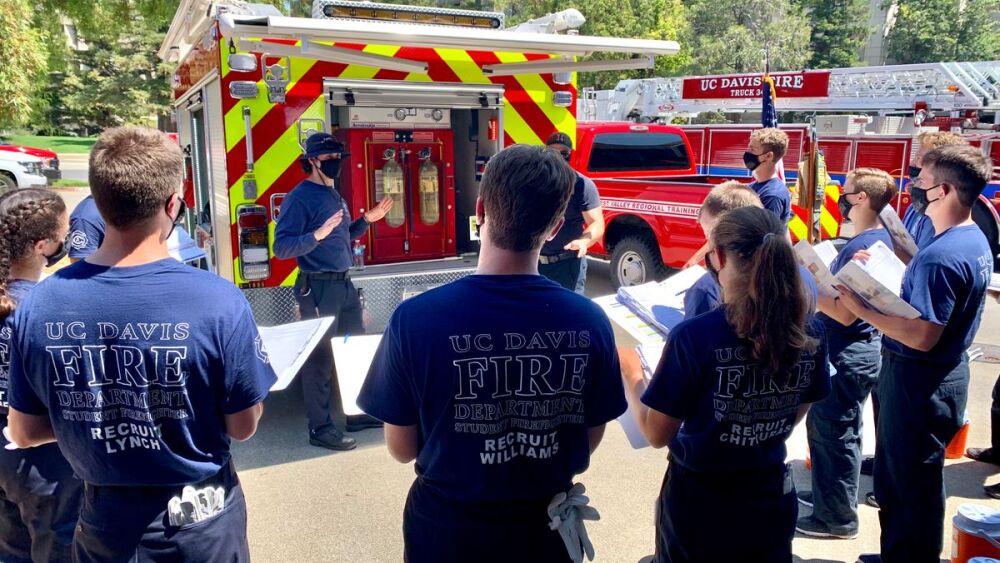The 2022 Firefighter Safety Stand Down, taking place June 19-25, focuses on the importance of situational awareness to help firefighters solve problems, prevent bad outcomes, and make better decisions in high-stress environments. This series covers how to apply situational awareness to five incident types to be covered in daily focus activities: structure fires, EMS, wildland incidents, roadway response and acts of violence.
Developing and maintaining situational awareness is a three-step process that includes:
- Perception: Gathering information about what is happening around you
- Understanding: Making sense of the information you gather
- Prediction: Anticipating future events to prevent bad outcomes
Responders use perception to gather critical clues and cues about the emergency. Some of the information is shared with responders over the radio, some of the information may come from preplans, and some of the information is gathered during the size-up. Think of the information gathered as pieces to a puzzle that responders must assemble. The assembled puzzle pieces form a “picture of understanding” that allows responders to make sense of what is happening.
The responder’s understanding drives the decision-making process. If responders shortcut this process, they may find themselves making decisions before they understand the problem that needs solving. As you can imagine, this can lead to errors in decision-making, flawed tactics and tragic outcomes.
Structure fires
Fighting structure fires may arguably be firefighters’ highest-risk, highest-consequence, most time-compressed activities. Under rapidly changing conditions, errors in decision-making can lead to flawed tactics and tragic outcomes. There is little margin for error.
As I have spoken to thousands of fire officers about their decision-making processes, I realize that everyone has their preferred methods. It is not my goal to change what may be working well for you. Thus, I would like to offer a few situational awareness ideas that might add some value to your already existing process.
Regardless of the complexity of a structure fire, only a handful of puzzle pieces are essential to start the decision-making process. It’s a good idea to not complicate your decisions with volumes of information. Under stress, our brains will struggle to understand high volumes of complex and/or detailed information. This can contribute to analysis paralysis and inhibit your ability to make timely decisions.
Situational awareness clues and cues for residential dwelling fire decision-making might include asking yourself:
- What is the smoke and fire condition telling me?
- What is the construction type, and how fast is the structure decomposing under the stress of the fire?
- How fast are conditions (e.g., smoke, fire, structural integrity) changing?
- Is there a potential for savable lives in savable spaces inside this house?
Asking yourselves these questions, in this order, can help you determine your course of action. For example:
- Smoke and fire conditions provide flashover clues and cues.
- Building construction and speed of decomposition provides structural collapse clues and cues.
- Speed of changing conditions provides clues and cues for how fast windows of opportunity are closing.
- The clues and cues from 1-3 help determine if there is a potential for savable lives.
Don’t get hung up on this specific process; this is just an example. If you have a method for critical decision-making that works better and helps you perceive, understand and predict outcomes better, use it. If you think the order of how the information is assessed should be different, change it. The important thing is to have a decision-making process rooted in situational awareness.
learn more about situational awareness
- Day 2: Situational awareness at EMS incidents: Overcoming complacency
- Day 3: Situational awareness at roadway incidents: Honing a defensive mindset
- Day 4: Situational awareness on wildland fires: Share the mental workload
-
Day 5: Situational awareness during acts of violence: Vigilance is key
Safety Stand Down resources for each incident type, as well as general situational awareness information, are available at the Safety Stand Down resources center.
Read next
Situational awareness: The foundation for good decision-making
The 2022 Firefighter Safety Stand Down focuses on practical applications of situational awareness, on and off the incident scene




